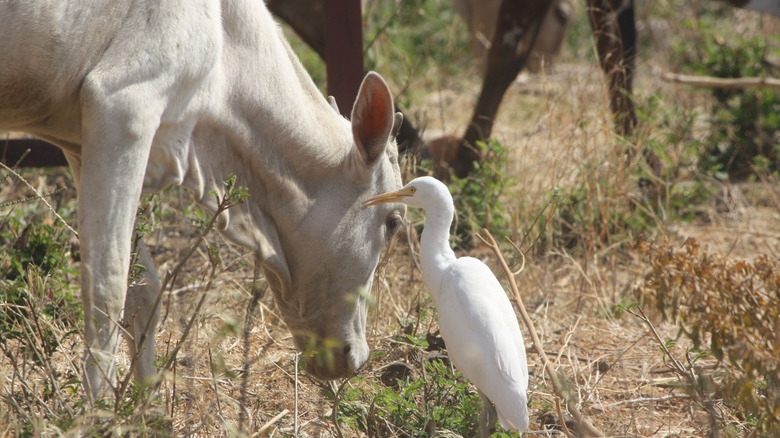Experts Express Concerns About The Bird Flu Outbreak In Dairy Cows
As bird flu infections continue and spread, experts are weighing in about severity of the outbreak and the potentially alarming paths H5N1 appears to be taking. Of particular concern are the multi-state reports of avian influenza showing up in dairy cattle, and whether the disease could spread to humans. According to the Centers for Disease Control and Prevention (CDC), outbreaks in dairy cattle were first reported on March 25, 2024, with known cases in nine states as of May 2. To date, 36 cattle herds are known to have been infected with the bird flu virus.
Though still considered rare, more than 200 mammals have tested positive for H5N1 bird flu since 2022. The CDC has confirmed the first case of mammal-to-human transmission occurred in Texas, though the organization is still maintaining that its human health risk assessment for the U.S. general public is low. Those with direct, prolonged, and unprotected exposure to infected animals, including cattle, carry greater infection risk.
However, a boots-on-the-ground viewpoint from scientists is more nuanced, particularly among epidemiologists who investigate causes, patterns, and public health risks related to disease and injury. In an interview with Agriculture Dive, epidemiologist Katelyn Jetelina, a public health expert, prominent science blogger, and scientific advisor to the CDC, digs into the potential dangers of bird flu outbreaks in cows, and the consequent impact on humans.
Experts recommend more testing for bird flu infections in cattle
In conversations with Agricultural Dive, Jetelina makes the concerns over H5N1 bird flu spreading from dairy cattle to humans clear. Noting many lingering questions, she acknowledges that it's likely more widespread than reported, primarily due to incomplete data and complexities with identifying transmission, sources, and how or where transmission is occurring. "We need to do a whole lot more testing to understand how this virus has changed over time, and therefore predict where it might end up," she said.
An infectious disease epidemiologist from the University of Texas, Gregory Gray, agrees that human cases of H5N1 are likely much higher already, based on typical bird-flu symptoms among on-site workers that are coinciding with cattle infections (via NPR). It's also probably more geographically widespread, he notes.
What we do know is concerning on several levels, explains Jetelina. Wastewater surveillance, which soared during the COVID-19 pandemic, is showing spikes in H5N1, though more research is necessary to identify the source, whether from animals, humans, milk dumping, or animal waste. Issues of prevention arise, including the controversial use of animal vaccines. "I think if we start seeing human-to-human transmission, we certainly need to start really ramping up our vaccine manufacturing," Jetelina says. It's important to note that human infection via food consumption is considered unlikely at this point, per USDA testing of ground beef and FDA testing of dairy products. However, experts and scientists still caution that testing has been limited and needs to increase.

